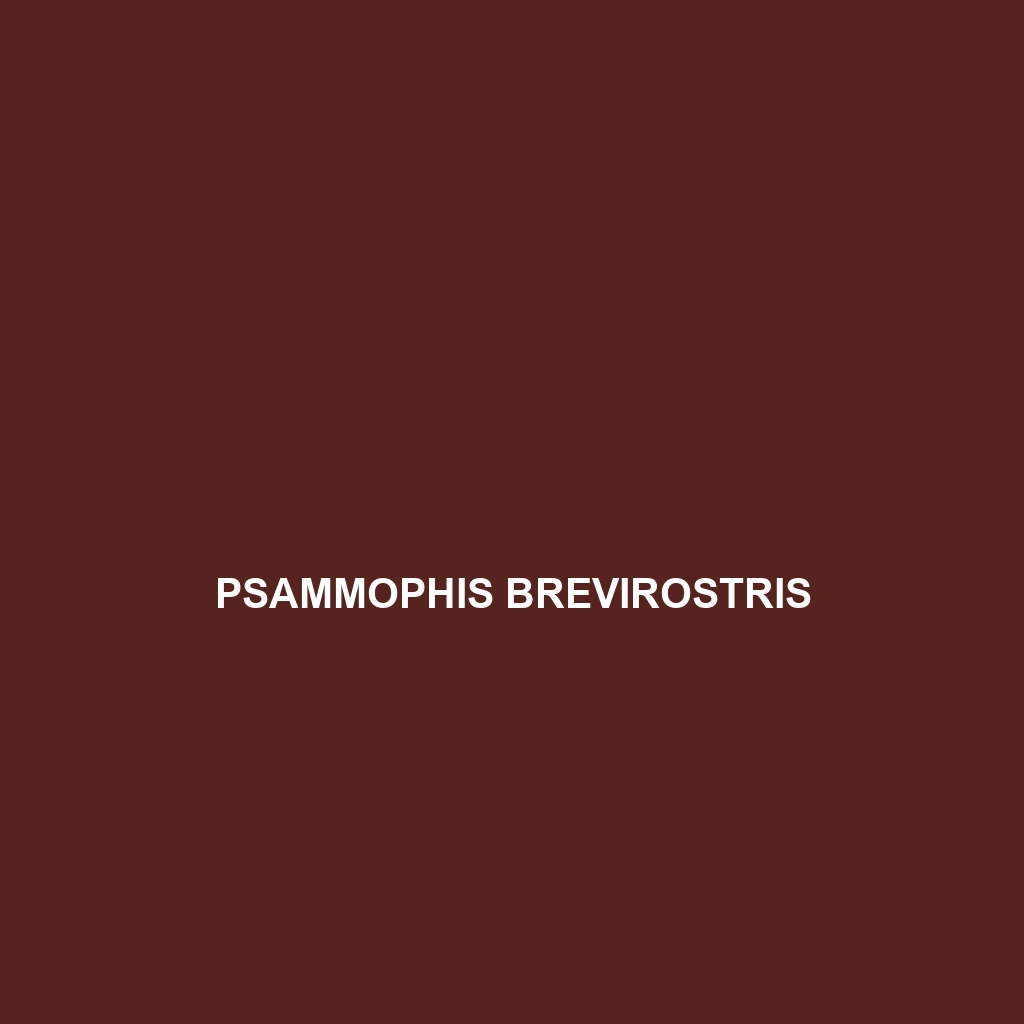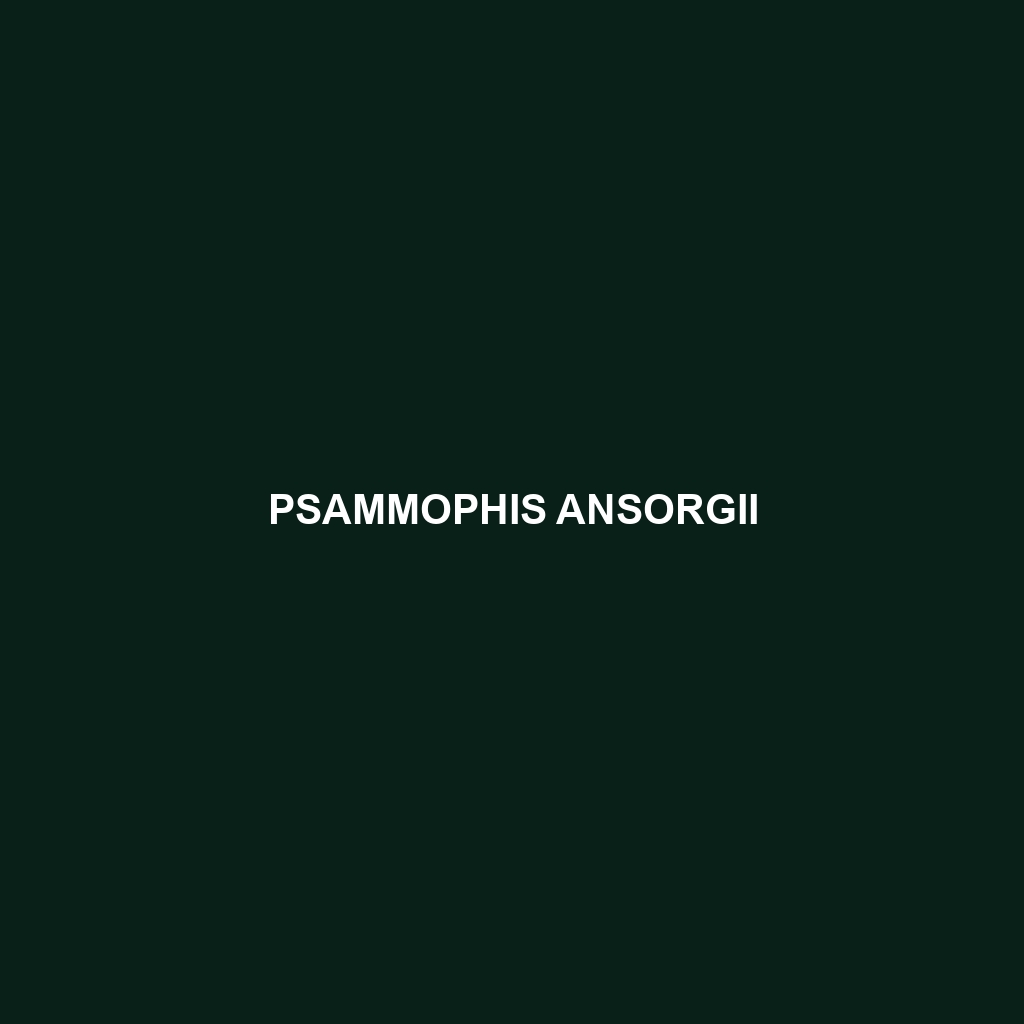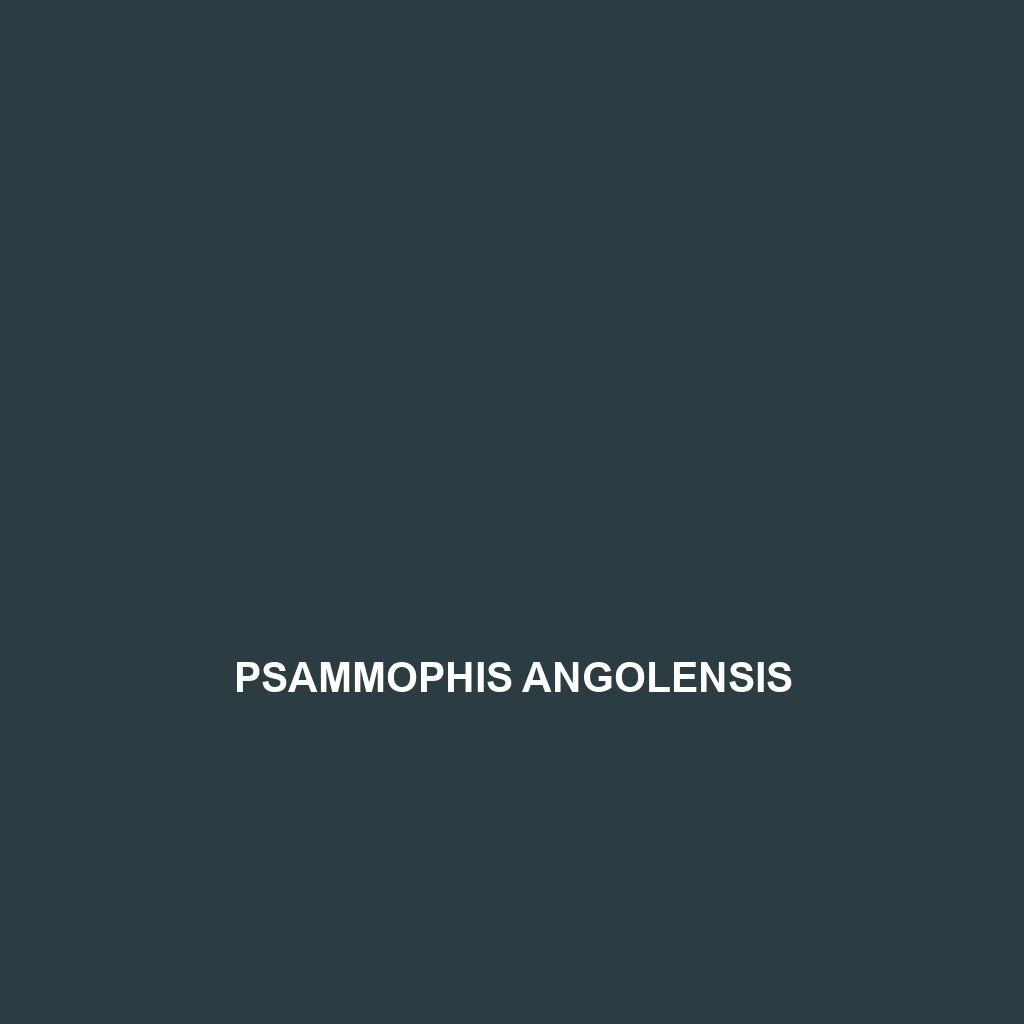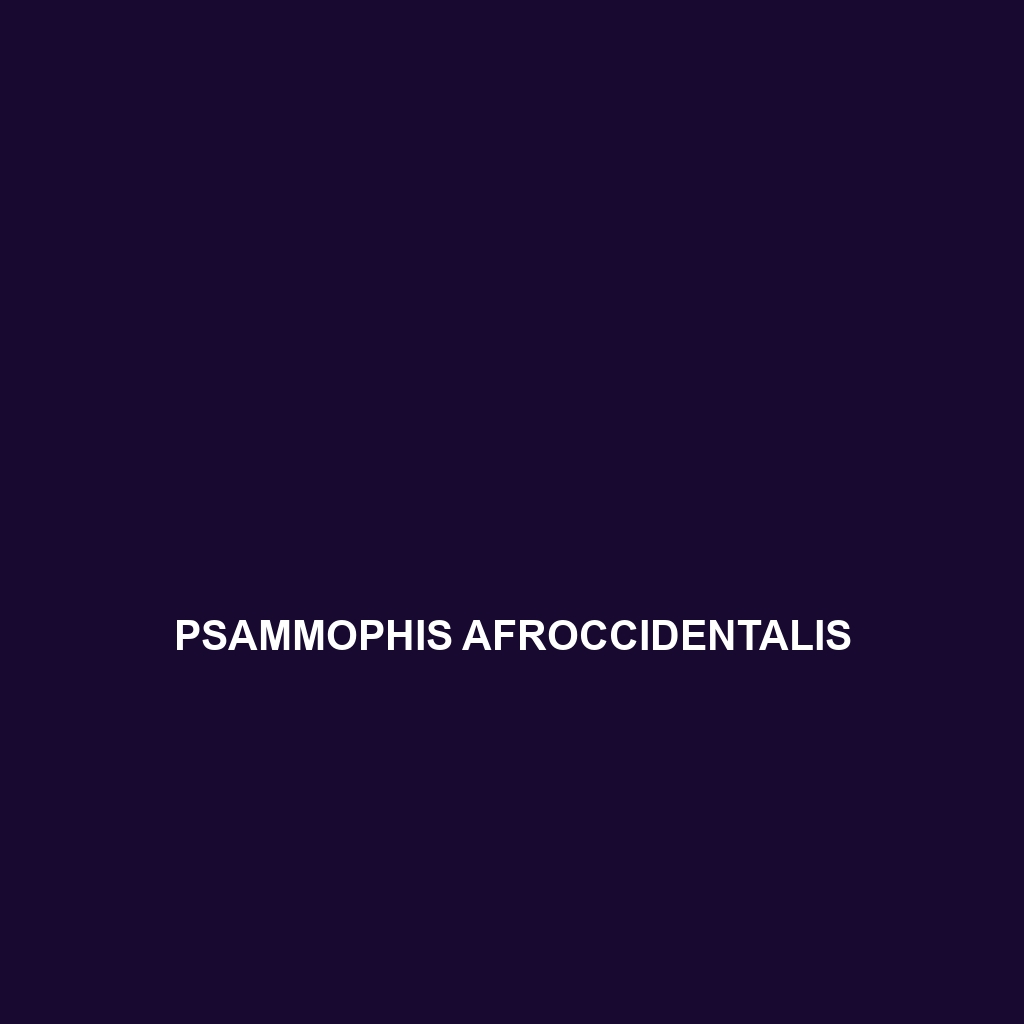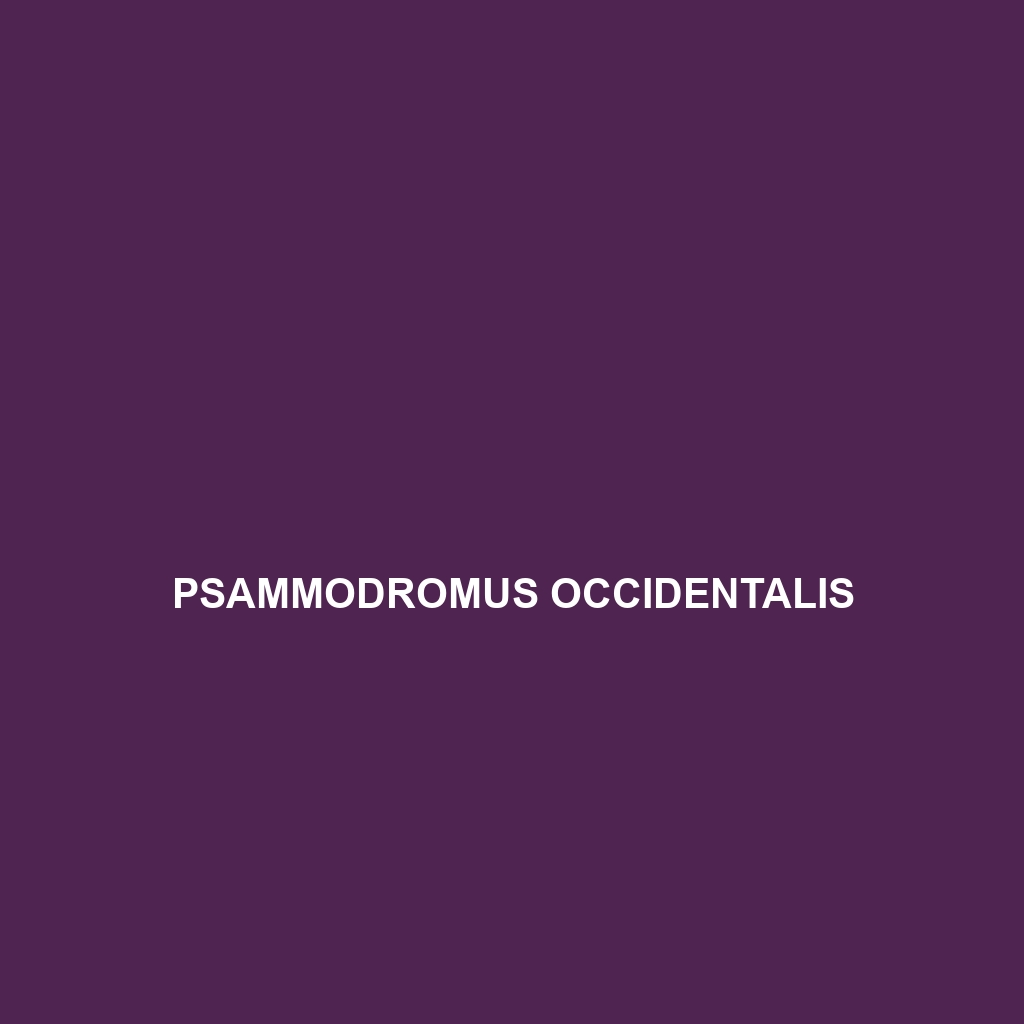<p><b>Psammophis brevirostris</b>, commonly known as the short-snouted sand snake, is a slender, agile snake found in the arid savannas and dry grasslands of eastern Africa, particularly in Tanzania, Kenya, and Sudan. Known for its striking yellowish and light brown coloration, this diurnal carnivore preys on small rodents, lizards, and insects, showcasing impressive burrowing abilities and speed that aid in its survival.</p>
Category: Uncategorized
Psammophis ansorgii
<strong>Psammophis ansorgii</strong>, commonly known as Ansorge's sand snake, is a slender, diurnal snake native to Africa's tropical and subtropical regions, thriving in savannas and sandy habitats. This carnivore feasts on small mammals and reptiles, employing quick strikes for prey capture, while playing a crucial role in maintaining ecological balance as both predator and prey.
Psammophis angolensis
<p><b>Psammophis angolensis</b>, or the Angolan sand snake, is a slender, diurnal predator native to sub-Saharan Africa, known for its distinctive coloration and adaptability to various sandy habitats. Typically reaching lengths of 1.2 to 1.5 meters, it primarily feeds on small vertebrates and plays a vital role in maintaining ecological balance in its environment.</p>
Psammophis aegyptius
Psammophis aegyptius, commonly known as the Egyptian grass snake, is a slender, agile, diurnal predator native to Northern Africa, thriving in arid habitats like savannas and deserts. With a unique pointed snout and large bulging eyes, this carnivorous snake feeds on small rodents, birds, and lizards, playing a critical role in its ecosystem by regulating prey populations.
Psammophis afroccidentalis
<p><b>Psammophis afroccidentalis</b>, commonly known as the Western Sand Snake, is a slender, medium-sized snake measuring 70-110 cm, characterized by its sandy brown coloration and dark blotches. Primarily found in the dry uplands and savannas of Sub-Saharan Africa, this carnivorous snake is known for its swift movement, burrowing behavior, and crucial role in maintaining ecological balance.</p>
Psammophilus dorsalis
Psammophilus dorsalis, commonly known as the Indian Sand Boa, thrives in arid regions of India, featuring a slender body that reaches lengths of 40 to 60 cm, adorned with sandy yellow and brown coloration for excellent camouflage. Primarily insectivorous and known for its burrowing habits, this species plays a crucial role in its ecosystem by helping to control insect populations and serving as prey for larger animals.
Psammophilus blanfordanus
<strong>Blanford's Rock Lizard (Psammophilus blanfordanus)</strong> is a slender, carnivorous lizard found in temperate forests and savannas of India and Nepal. This diurnal species, measuring 15 to 20 cm, adapts well to rocky environments, showcasing vibrant coloration that aids in camouflage and an important role in regulating insect populations.
Psammodynastes pictus
<b>Psammodynastes pictus</b>, commonly known as the painted snake, is a vibrant and adaptable species found in humid habitats across Central and South America. Reaching lengths of 60 to 100 cm, this nocturnal carnivore preys on small invertebrates and plays a vital role in maintaining ecological balance.
Psammodynastes pulverulentus
<p>The <b>Psammodynastes pulverulentus</b>, or powdery sand snake, is a nocturnal insectivore known for its remarkable sandy coloration and burrowing abilities, found in tropical Southeast Asia. This slender snake, measuring 60 to 120 cm, plays a crucial role in its ecosystem by controlling insect populations and serving as prey for larger predators.</p>
Psammodromus occidentalis
<b>Psammodromus occidentalis</b>, commonly known as the western psammodromus, is a slender lizard native to the dry scrublands and grasslands of Spain and Portugal, measuring 10-15 cm in length. Adapted to sandy environments, this insectivorous species exhibits remarkable agility and burrowing abilities, playing a vital role in controlling insect populations and maintaining ecological balance.
